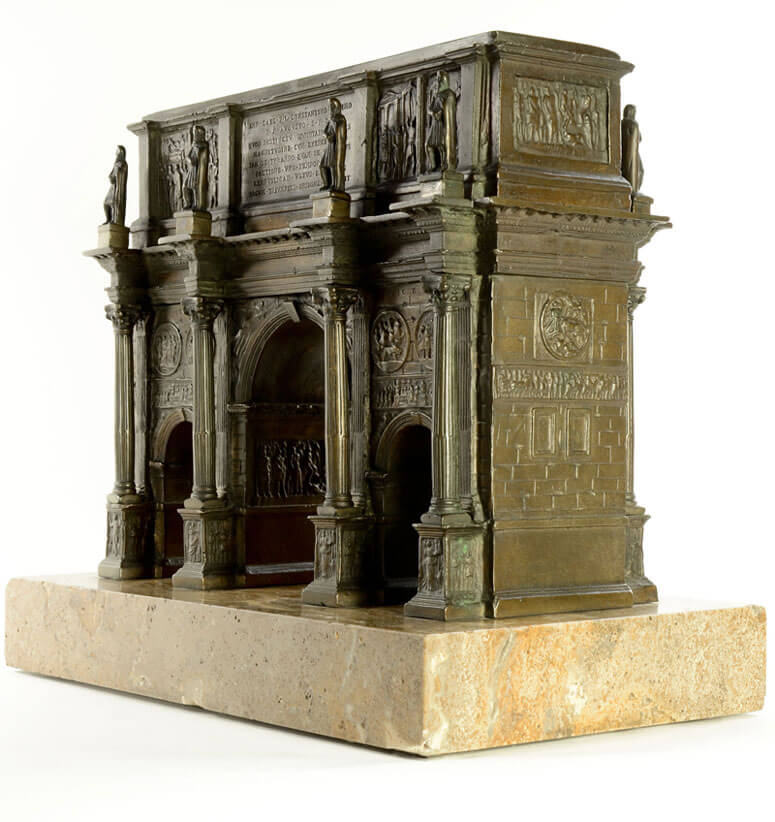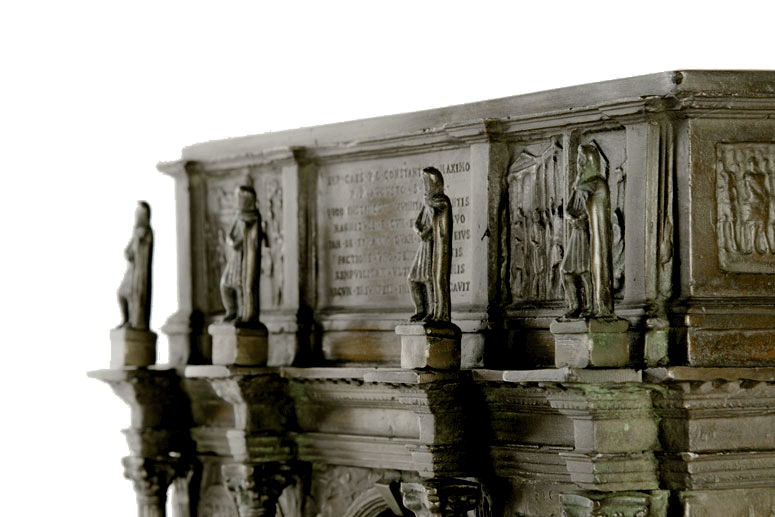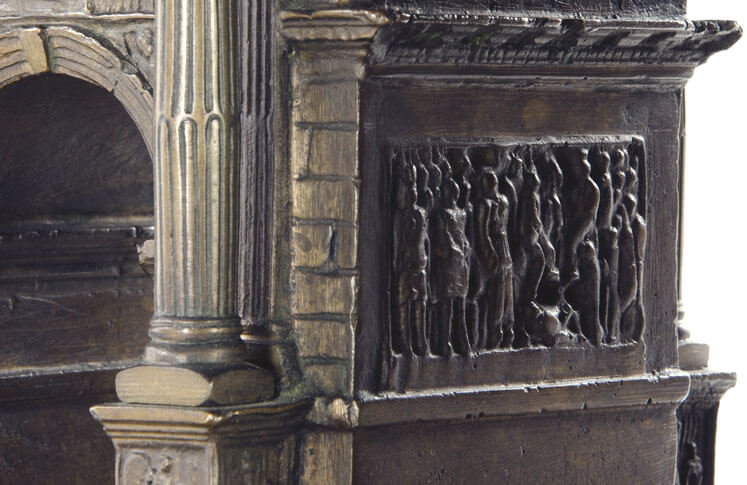Arch of Constantine
dark patinated bronze/travertino di Tivoli marble base
rome, ca. 1870, 12″ h.
Arch of Constantine, Rome
There are, very generally, two types of Roman19th century souvenir architectural models – those carved in stone, and others cast in bronze. (There are also hybrid objects, including both materials, but these are the exception.)
With the stone miniatures, subjects and sizes proliferate. There is scarcely a noteworthy ancient Roman building not rendered in giallo antico marble or alabaster. This group also includes surprising, nearly anonymous subjects – the Navicella Fontana, Arch of Janus, etc. – which fired the imagination of few tourists.
The 19th century subjects of bronze castings, on the other hand, are relatively few – the Trajan and Antonine Columns, Lateran Obelisk, Pantheon and Temple of Vesta, Tomb of Caecilia Metella and Arch of Constantine, and a couple of others.
Why the difference? It is, of course, much more difficult to make a bronze than a stone miniature. With the latter, a talented scarpellino – stone cutter – required just a promising block of marble, a few chisels, and finishing compound to produce, in short order, a salable model. Fashioning a bronze, on the other hand, requires making a detailed model, then a mold, and sourcing bronze, which must be heated in an oven until molten, then poured into the mold. After cooling, the bronze parts must be assembled, then finished, patinated, and often mounted to a base.
The rigors of casting bronze accounted, in part, for these souvenirs being much more expensive, hence scarcer, than their carved stone counterparts – a pattern which has trickled down from the 19th century to the present day.
A silver lining of the bronze casting process ought to have been that once the model was complete, it should have been relatively easier to run off a significant number of models. And, with some subjects, including Rome’s Temple of Hercules Victor, this is just what we see today – an abundance of bronze mementos.
Yes, counter-intuitively, the great majority of 19th century architectural subjects cast in bronze are wincingly scarce.
This large, highly-detailed, skillfully-made model of the Arch of Constantine is the only example we’ve encountered in 30 plus years of fervent searching. What happened to the others? Melted down for scrap, or for a war effort (a fate impossible for stone souvenirs)? Or because of their rarefied market, never produced in any great number to begin with? Or, because relatively large and unwieldy, simply lost along the way?
(A current line of inquiry concerns the source for these models’ bronze. Because almost all stone 19th century Roman architectural models were carved from antique marbles – stone brought to Rome in the time of Augustus or soon after – we wonder if these bronze models may also be made form ancient material. Should we find out, we’ll let you know.)
Who made this impressive model of the Arch of Constantine? The level of detail and distinctive dark brown/green patination may be compared with the later work of the Romans Wilhelm Hopfgarten and Ludwig Jollage. Also, that this model is secured to a base of antique stone – probably travertino di Tivoli, employed in ancient Roman construction – relates to the firm’s earlier use of ancient Egyptian granite as the base for its gilded bronze models of the city’s obelisks.
Yet, this replica is considerably larger than the firm’s earlier model, and without the archaic sculpture atop its roof. This, on closer examination, suggests a different, as yet unidentified hand.







